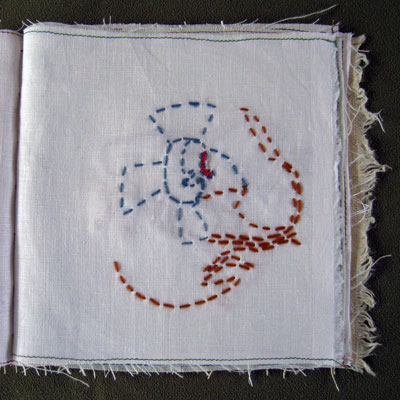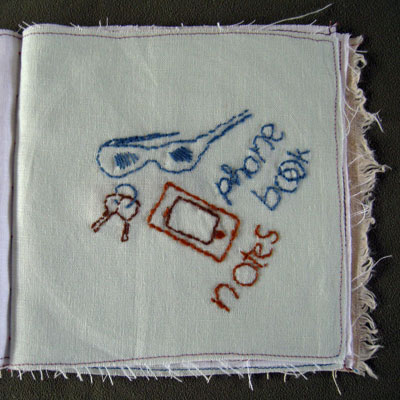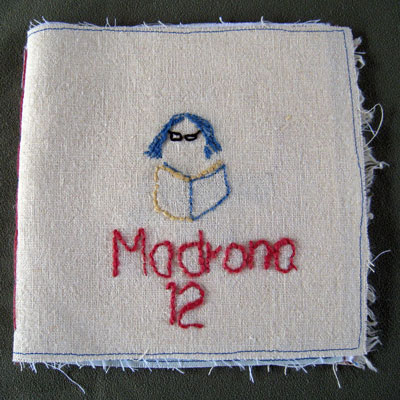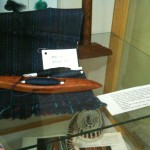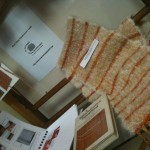During the Undercover Sketchbook class, Sarah Swett talked about how perfect her little Kuchulu was for spinning embroidery floss. Small, compact, and it forms a little center pull ball that you can wind both ends into a plying ball *. Simple. Easy to pack and carry around.
Ah-ha! Says I. I have two little Kuchulus. I can do this too! And in under 5 minutes, I spun and plied that little bit of red floss you see below.
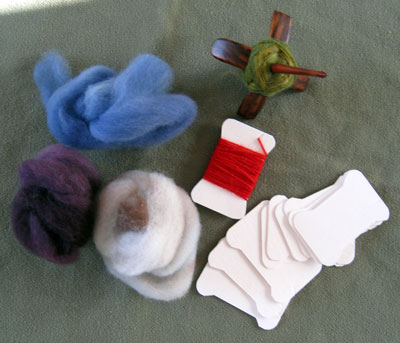
Spinning Floss
I took some scrap watercolor paper I had sitting around for wrapping samples and cut them into little floss holders. The cards are about 1.5″ x 2″ (35 cm x 50 cm). That’s how small these little Kuchulus are.
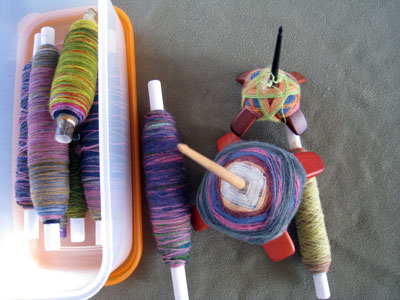
Turkish Spindles
I had been spinning on my Turkish Delight and Kuchulus for some socks. But it’s been taking a while. I’ve been working on the above on and off for a couple of years now. It’s slow because I’ve been doing other things along the way. And I was a bit disappointment because the singles spun on the Kuchulu were much finer than those on the Delight (duh!). I kept those on the smaller quills so I will remember that they are different.
Now I know what to do with them. I’ll wind them off color by color, and then onto plying balls and turn them into embroidery floss. I’ll keep the stash of Delight spun yarn for the socks that I will eventually get too. I’m in no hurry.
And hopefully, the small quick spinning tasks will help me work through this bottonless bin of merino scraps!

Lots of Fluff!
By the way, I tried two slightly different wind on methods on the Turkish Delight and on the Kuchulus. Here’s a close up. Can you see the difference?

2 wind on methods
They are both under 1, over 2. But on the Delight in the background is the method that I had been using. Quick and efficient. The Kuchulu in the foreground is a method that I had seen floating around on the web. I call it the anal method. You wind on precisely next to the previous thread. It’s pretty on the spindle, but slow going.
I may ply the yarn on the Kuchulu exactly as it. After all, it should be fun to take my needle for a walk, with no destination in mind, using a randomly colored floss.
* Why form a plying ball from a center pull ball? It’s all about control. If you wind it off with even tension all at once, you won’t have to deal with a snarly mess as you get toward the end. You will have a nice consistent plying twist all the way through. And you know what? She’s right. It was easy peasy.

